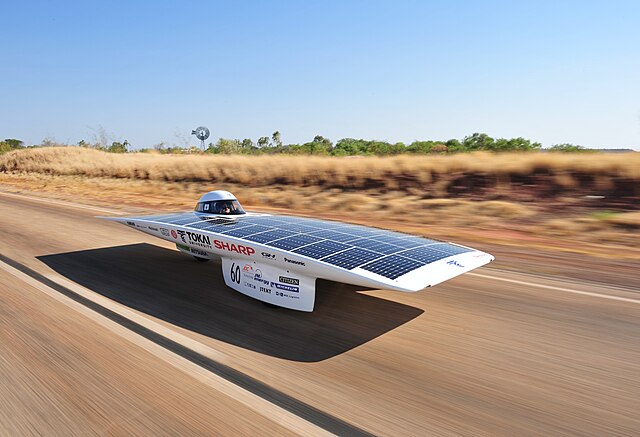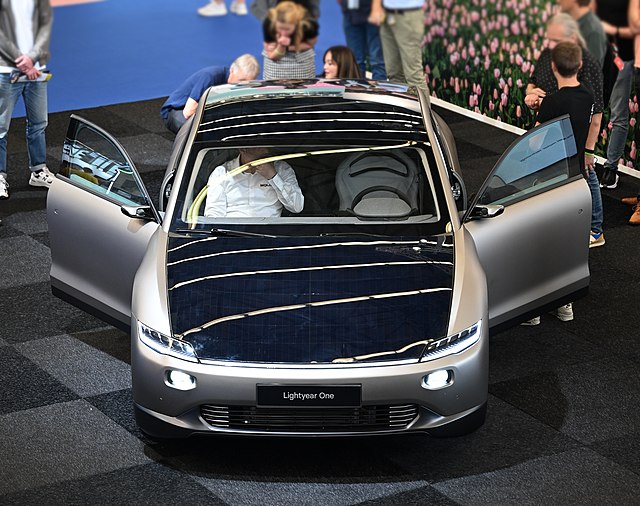Solar car racing refers to competitive races of electric vehicles which are powered by solar energy obtained from solar panels on the surface of the car. The first solar car race was the Tour de Sol in 1985 which led to several similar races in Europe, US and Australia. Such challenges are often entered by universities to develop their students' engineering and technological skills, but many business corporations have entered competitions in the past. A small number of high school teams participate in solar car races designed exclusively for high school students.
Sunswift IV and control vehicle during speed record attempts at HMAS Albatross.
Race vehicles head toward the finish line in the 2005 North American Solar Challenge.
A test chassis at Ford Proving Grounds in 1992.
A solar car is a solar vehicle for use on public roads or race tracks. Solar vehicles are electric vehicles that use self-contained solar cells to provide full or partial power to the vehicle via sunlight. Solar vehicles typically contain a rechargeable battery to help regulate and store the energy from the solar cells and from regenerative braking. Some solar cars can be plugged into external power sources to supplement the power of sunlight used to charge their battery.
Tokai Challenger, the winner of the 2009 World Solar Challenge, with an average speed of 100.5 km/h (62 mph) over the 2,998 km (1,858 mi.) race
The Lightyear 0, a solar-electric passenger car went into limited production in December 2022. Production stopped a month later.
The Squad Solar City Car, as presented of the Fully Charged 2022 event in Amsterdam.
Solar cars from University of Michigan and University of Minnesota heading west toward the finish line in the 2005 North American Solar Challenge






